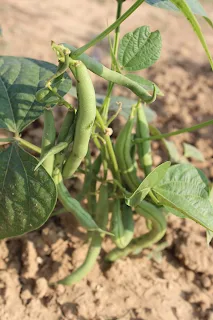Yield Response of Bushbean (Phaseolus vulgaris L.) to Doses of Fertilizers and Sowing Times in Bangladesh
- Ullah M.J. (Department of Agronomy, Sher-e-Bangla Agricultural University) ;
- Hossain H.M.M. Tariq (Department of Agronomy, Sher-e-Bangla Agricultural University) ;
- Baqque M.A. (Department of Agronomy, Sher-e-Bangla Agricultural University)
Abstract
The present study was initiated to explore the yield potential of bushbean by exploiting the interaction of variety, sowing time, and fertilizers containing N, P, and K Two varieties namely BARI Bushbean 1 and BARI Bushbean 2, three levels of fertilizer viz. control (N0P0K0), medium (N20P30K30), high (N40P60K60) and three sowing times (November 15, December 1 and December 15) were considered as treatment variables. Among the varieties, BARI Bushbean 2 always showed better performance for most of the yield and yield attributes duly attributed by the application of fertilizers \circleda N: P: K = 40: 60: 60 respectively. The highest seed yield (1375.17 kg/ha) was recorded when the crop was sown on the 15th November with the supplemented soil nutrition status as above. The influence of sowing times indicate that there is a gradual trend of decreasing in seed yield and other associated parameters after first sowing (15thNovember). The results of this study suggest that the multi-locational trial under varied sowing times with soil nutrition might potentially increase the long-term adaptation of bushbean in Bangladesh.
Keywords
Read full paper on:


No comments